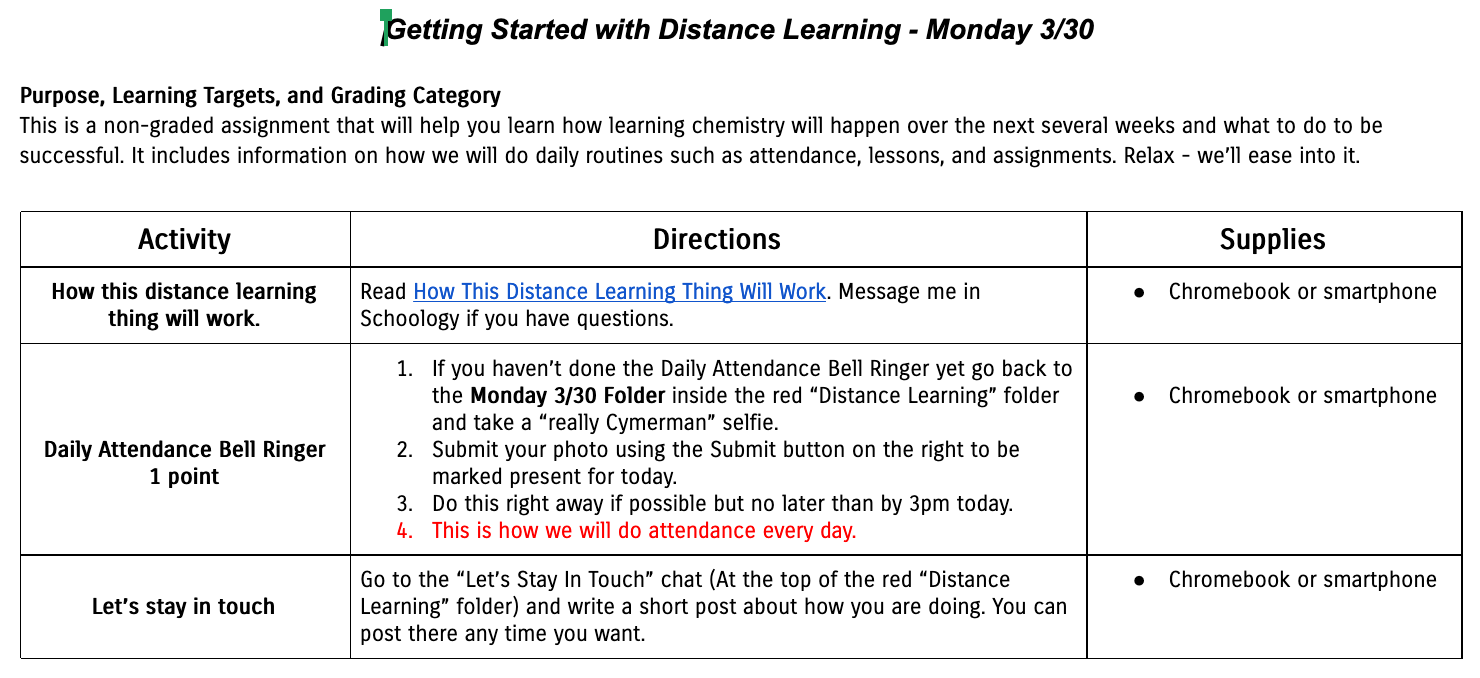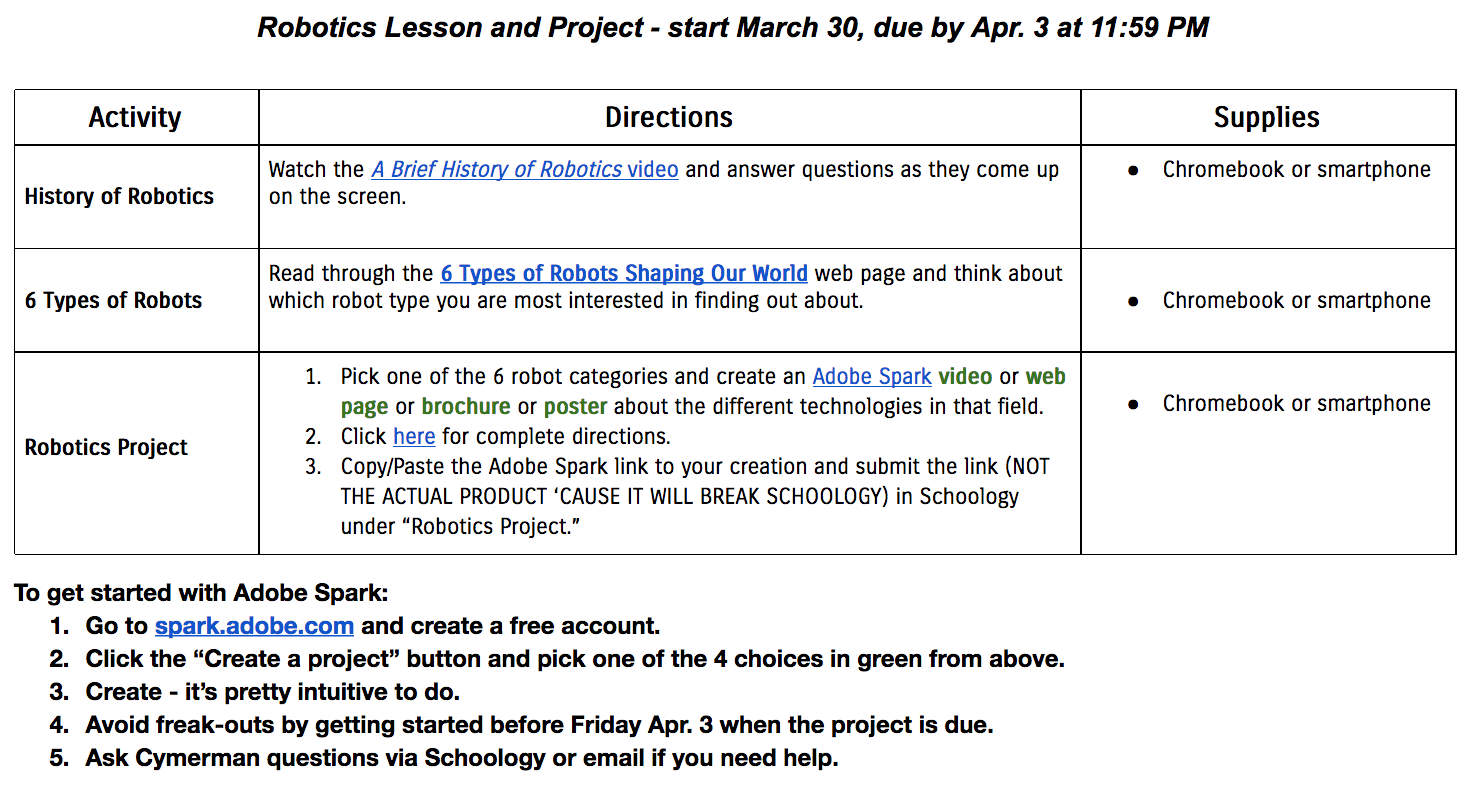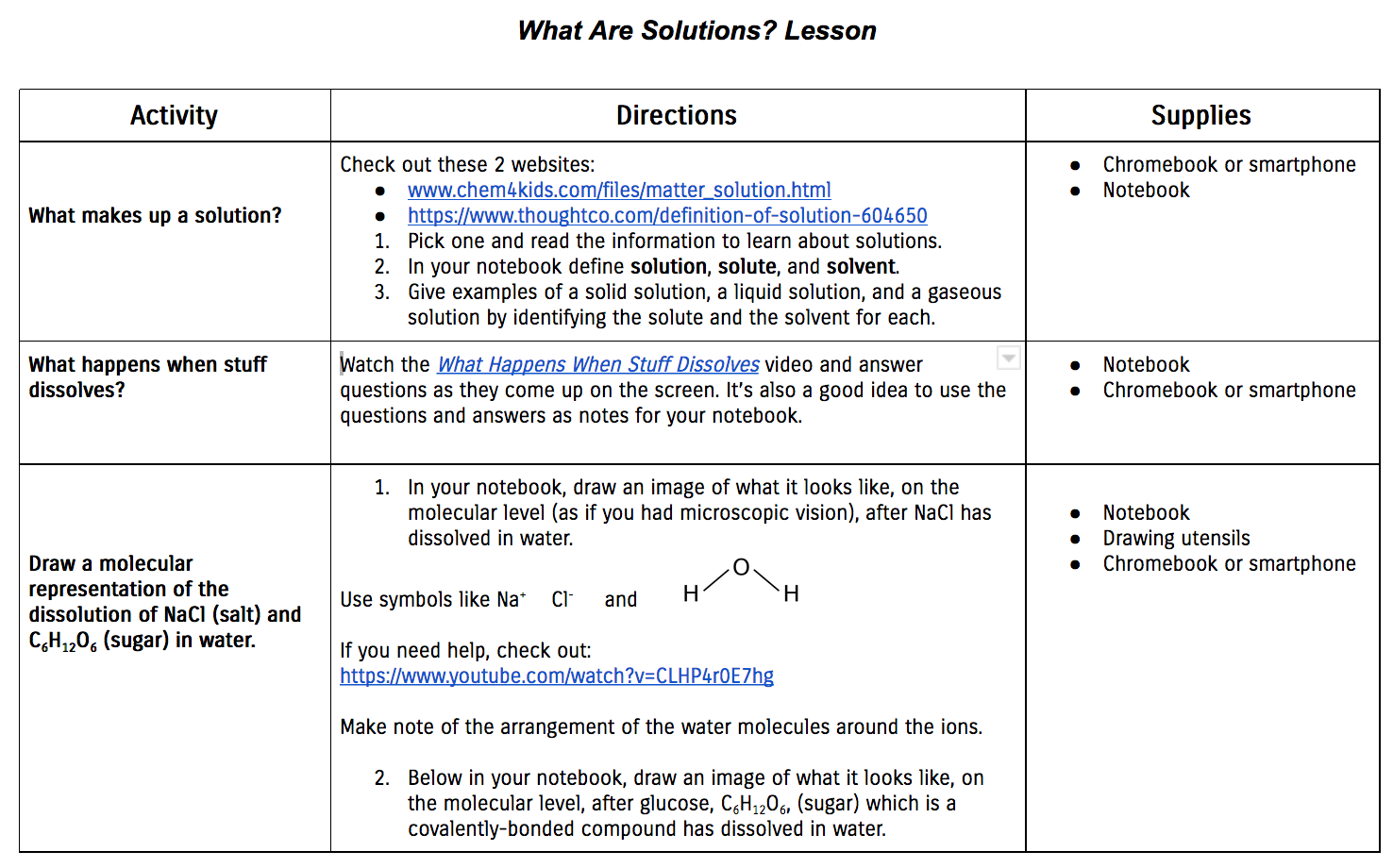Easing Into Distance Learning - The First 2 Lessons
“Sometimes the most important thing in a whole day is the rest we take between two deep breaths.”
This is my fourth post on Distance Learning. You can check out the other three by searching for “Distance Learning” in the search bar on the right. All posts are intended to help make the transition from traditional to completely-online learning easier. Please use the comment section at the bottom to share helpful ideas, tools, and techniques you use.
Monday’s the day hundreds of thousands of Minnesota students are coming back to school. They’re not walking the sidewalks, riding their bikes, getting off buses, nor parking their cars in their usual lot spots. They’re coming and staying at a distance all at the same time - learning from a distance as their teachers teach through screens and empty buildings are replaced by busy minds but hopefully not lagging Internet connections. Starting is hard so start easy. Easy does it.
Easing Into It
At first, I was “just gonna dive into it” like the novel coronavirus-caused hiatus never happened. But then someone smarter helped me see the light.
The images of the first two lessons are below. Click on each hyperdoc image if you’d like to copy it into your Google drive and edit for your purposes.
The First Lesson
I decided to use day 1 as a chance to do three things.
First, I wanted to help my students and their parents better understand how learning from home will look like. The “How This Distance Learning Thing Will Work” document is a Google doc that contains a list of most important routines, things to know, and how school-home communication will happen.
Second, I wanted to show and practice “doing” attendance. For each day, I created (and will create for all future online learning days) a Schoology assignment that allows student submissions I call the “Daily Attendance Bell Ringer.” For clarity, I will be using the Day, Date, Name format. Thus the first one is named “Monday 3/30 Attendance Bell Ringer.” You can set up something similar in other LMS platforms such as Google Classroom, Blackboard, or Moodle.
Third, I wanted to reach out to and keep in touch with my students so I created a discussion for each class which allows me to see how everyone is doing and provides an additional way to communicate. The nice thing is that I get an email every time a student posts a question or a comment to the discussion so I can respond quickly.
The Second Lesson
Day 2 gives another chance to reinforce the attendance procedure and an introduction to the three online apps we’ll predominantly use: Flipgrid, Adobe Spark, and Piktochart. I also plan on using Pear Deck, EdPuzzle, and a few other tools but I think three hit the getting started sweet spot.
The rest can be introduced individually during content lessons. Chances are though that you’ve already used most of the tools you plan on using during distance learning in your classroom so they are not completely strange to your students. It is important to note however that first introducing and then scaffolding the totally new tools will lead to fewer hiccups and less frequent headaches. But sometimes you just gotta to rough it.
The Benefits of Starting Slow
Less stress for teachers and students as everyone is given additional time to get used to the new normal before the impending doom of summative work.
Teachers who teach 2 or more courses can use the same lesson plans for the first few days for each class.
Fewer “How do I…” or “Where can I…” questions and a smoother transition to distance learning as routines are established first.
Being a human being?
Key Points
Take at least 2 days to ease into high school distance learning and perhaps longer if students are younger.
Establish and practice procedures and routines and keep some constancy.
Do everything you can to reduce the stress and keep breathing normally.
If you enjoyed this post or found it helpful consider signing up for my newsletter below.
Hi! I'm Oskar. I teach, write, and speak to make learning better.
BOOKS
- September 2025 2
- August 2025 5
- July 2025 4
- June 2025 2
- August 2024 2
- July 2024 2
- June 2024 1
- October 2023 1
- September 2023 3
- August 2023 6
- July 2023 6
- July 2022 2
- June 2022 1
- November 2020 3
- October 2020 3
- April 2020 1
- March 2020 5
- July 2019 1
- June 2019 1
- April 2019 1
- January 2019 1
- November 2018 3
- October 2018 2
- September 2018 1
- August 2018 8
- July 2018 11
- June 2018 4
- May 2018 5
- April 2018 2
- March 2018 4
- February 2018 5
- January 2018 3
- December 2017 1
- November 2017 5
- October 2017 7
- September 2017 6
- August 2017 5
- July 2017 3
- June 2017 10
- May 2017 7
- April 2017 7
- March 2017 15
- February 2017 12
- January 2017 13
- December 2016 15
- November 2016 8
- October 2016 7
- September 2016 12
- August 2016 14
- July 2016 10
- June 2016 13
- May 2016 10
- April 2016 8
- March 2016 5
- February 2016 7
- January 2016 6
- December 2015 5
- November 2015 8
- October 2015 2














